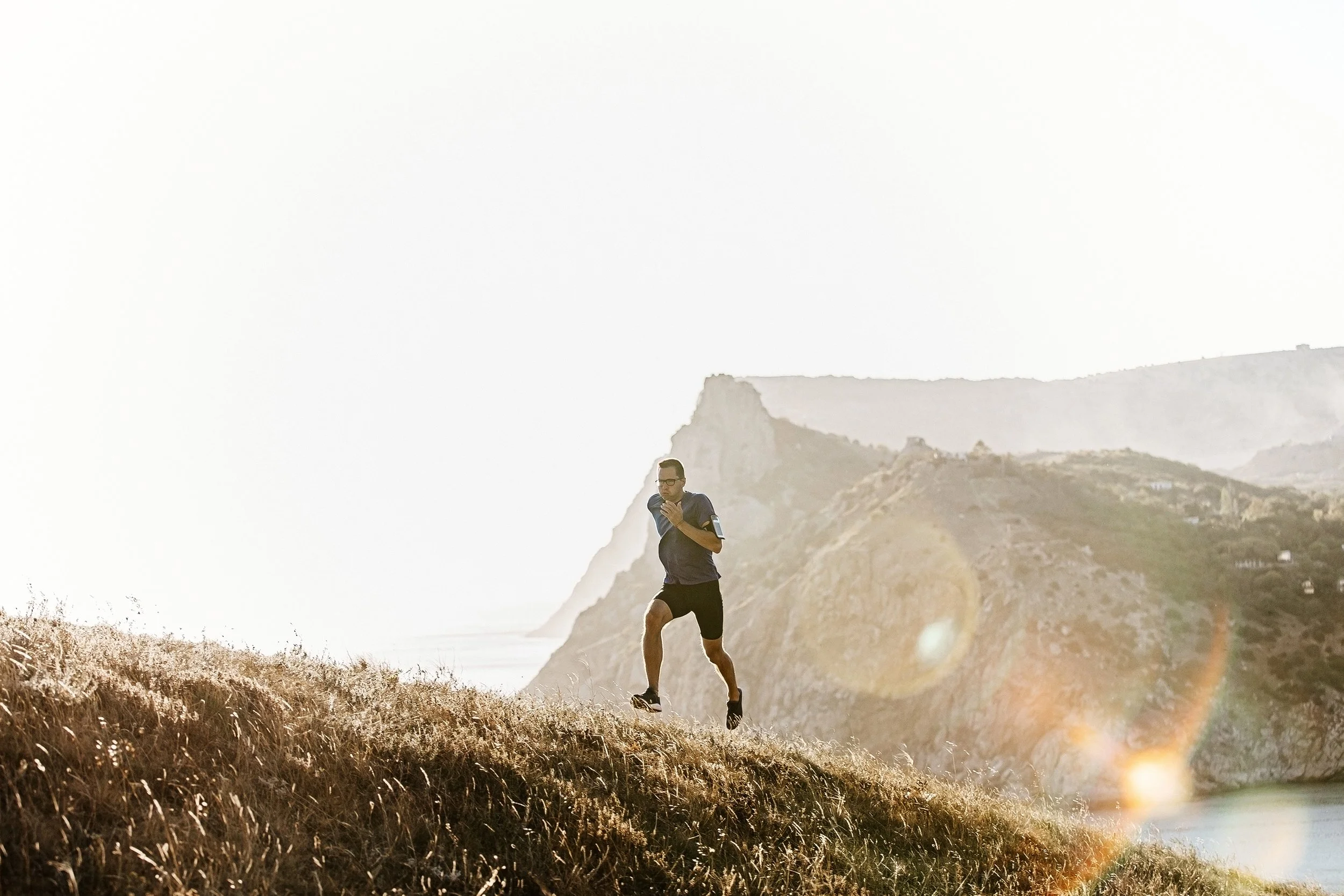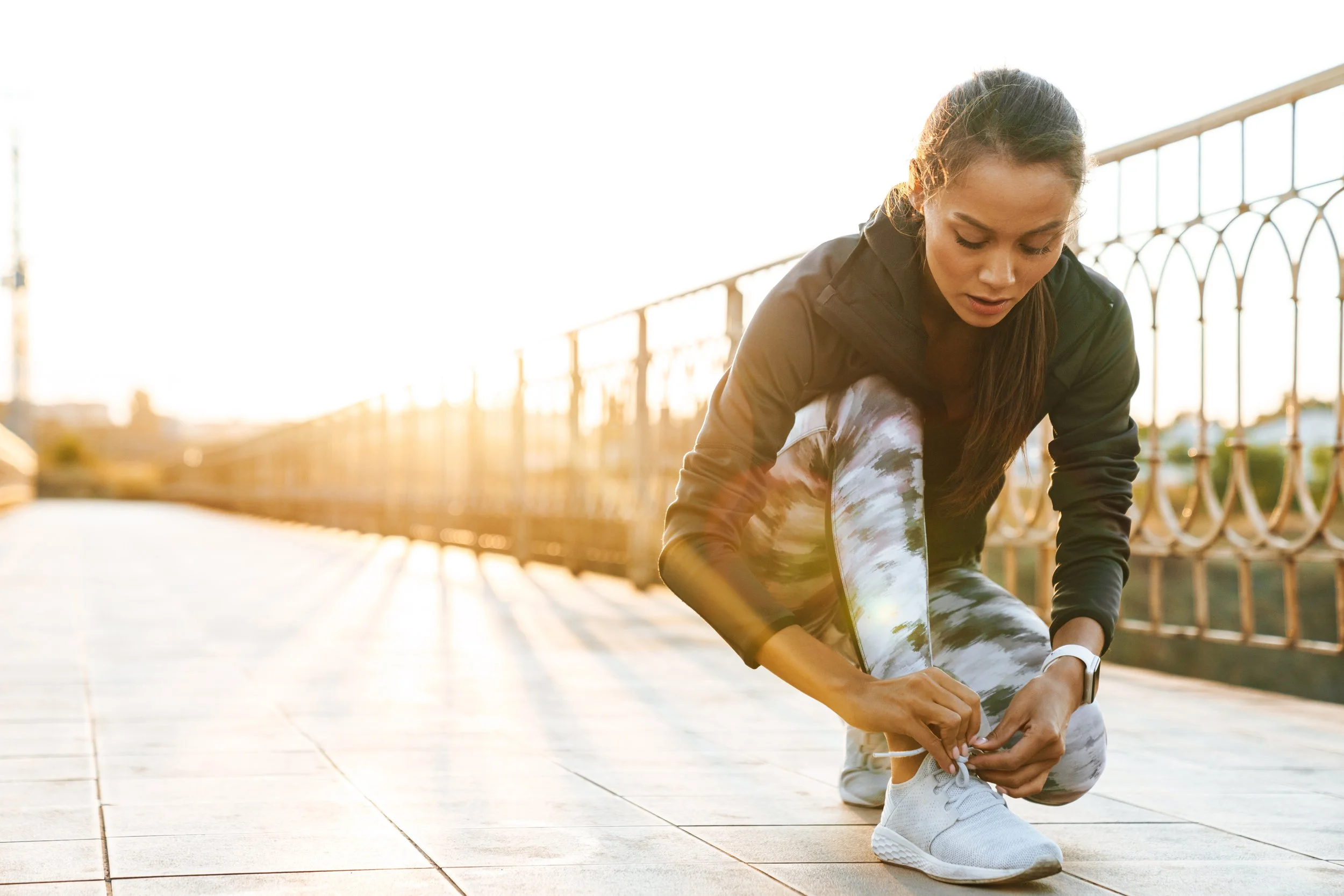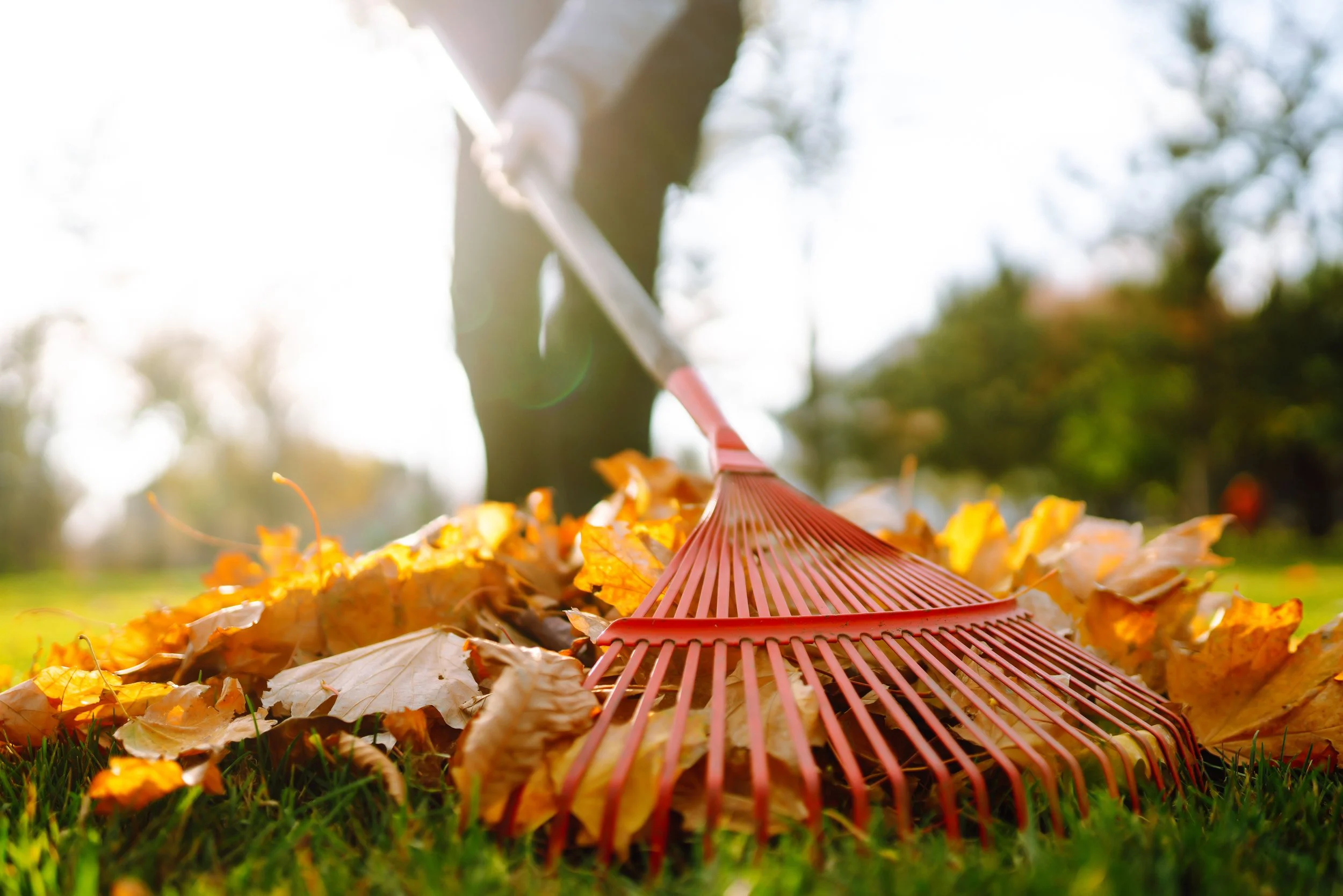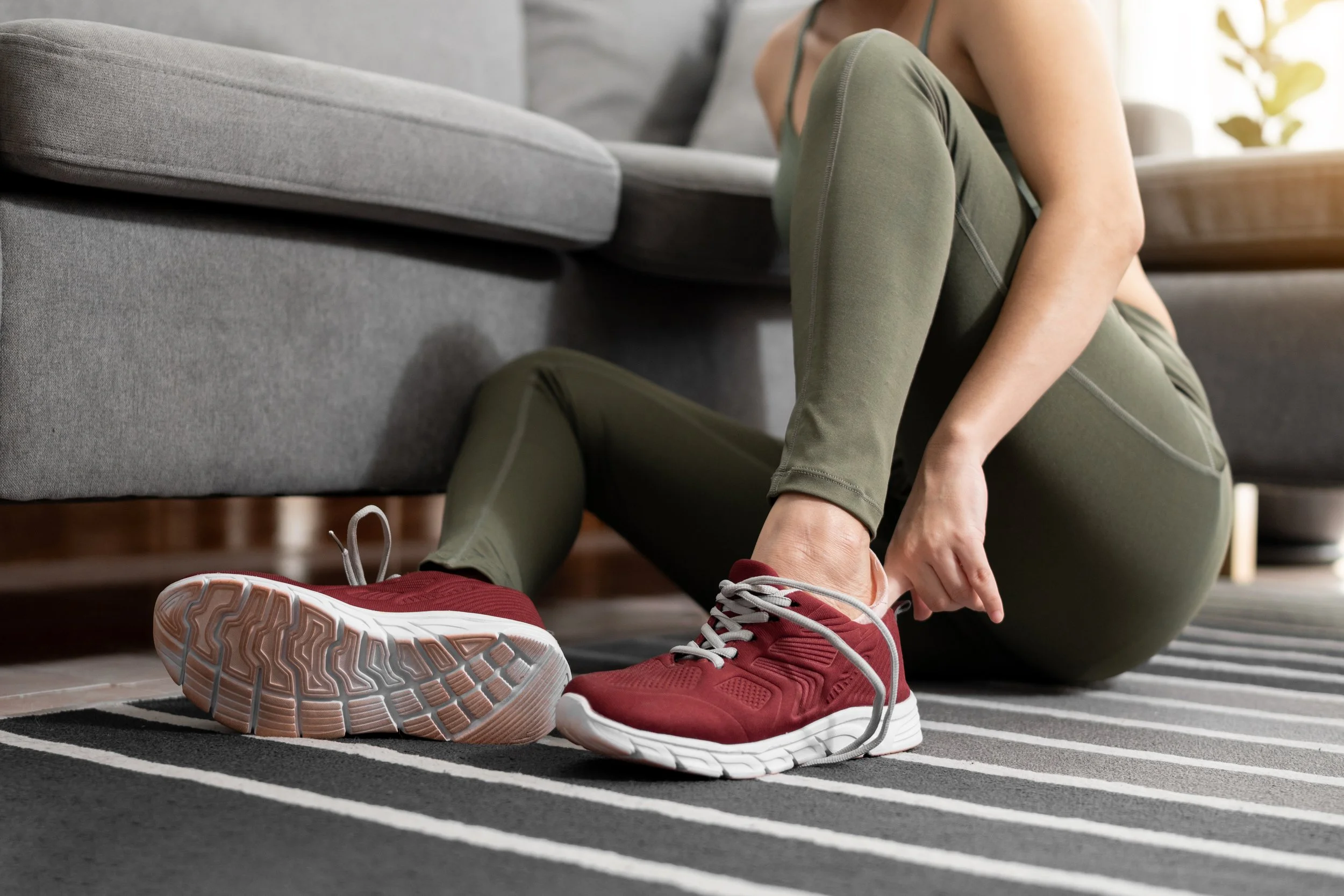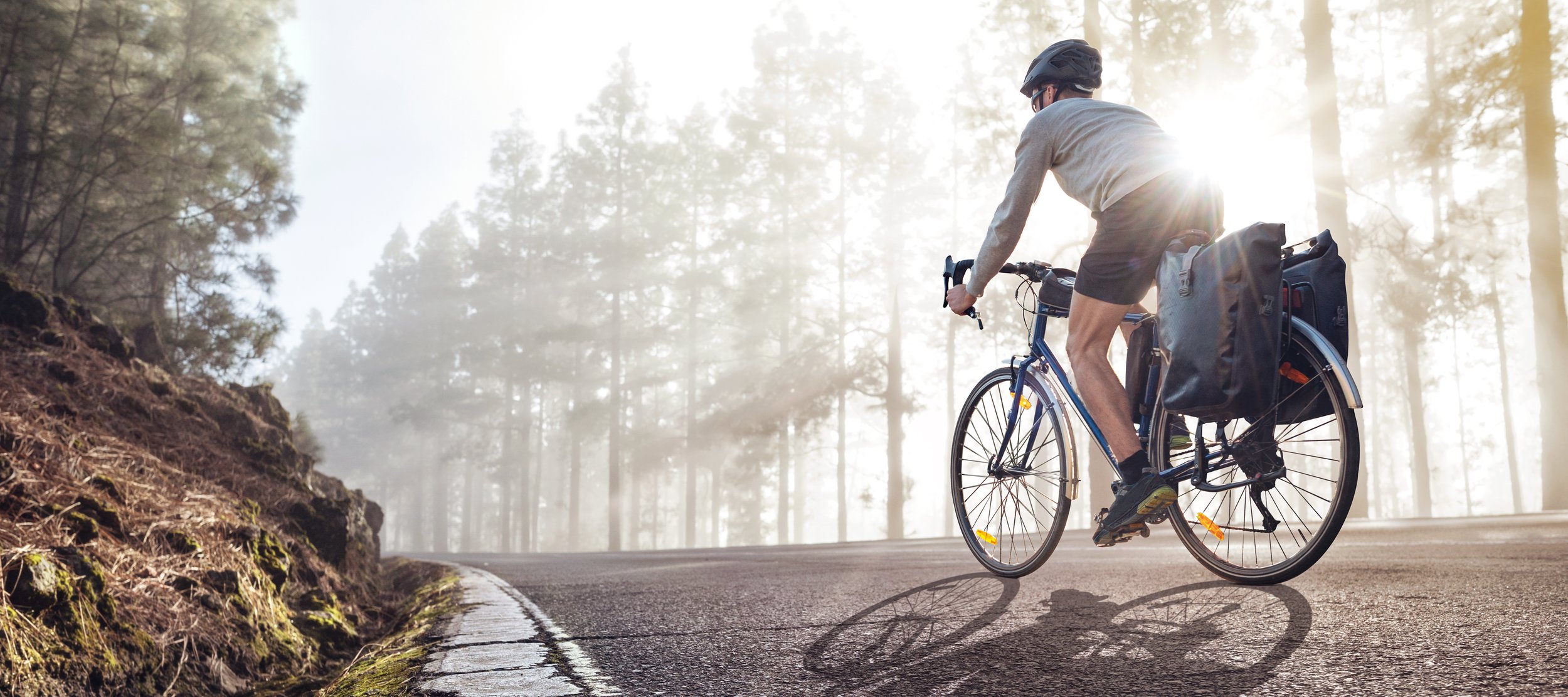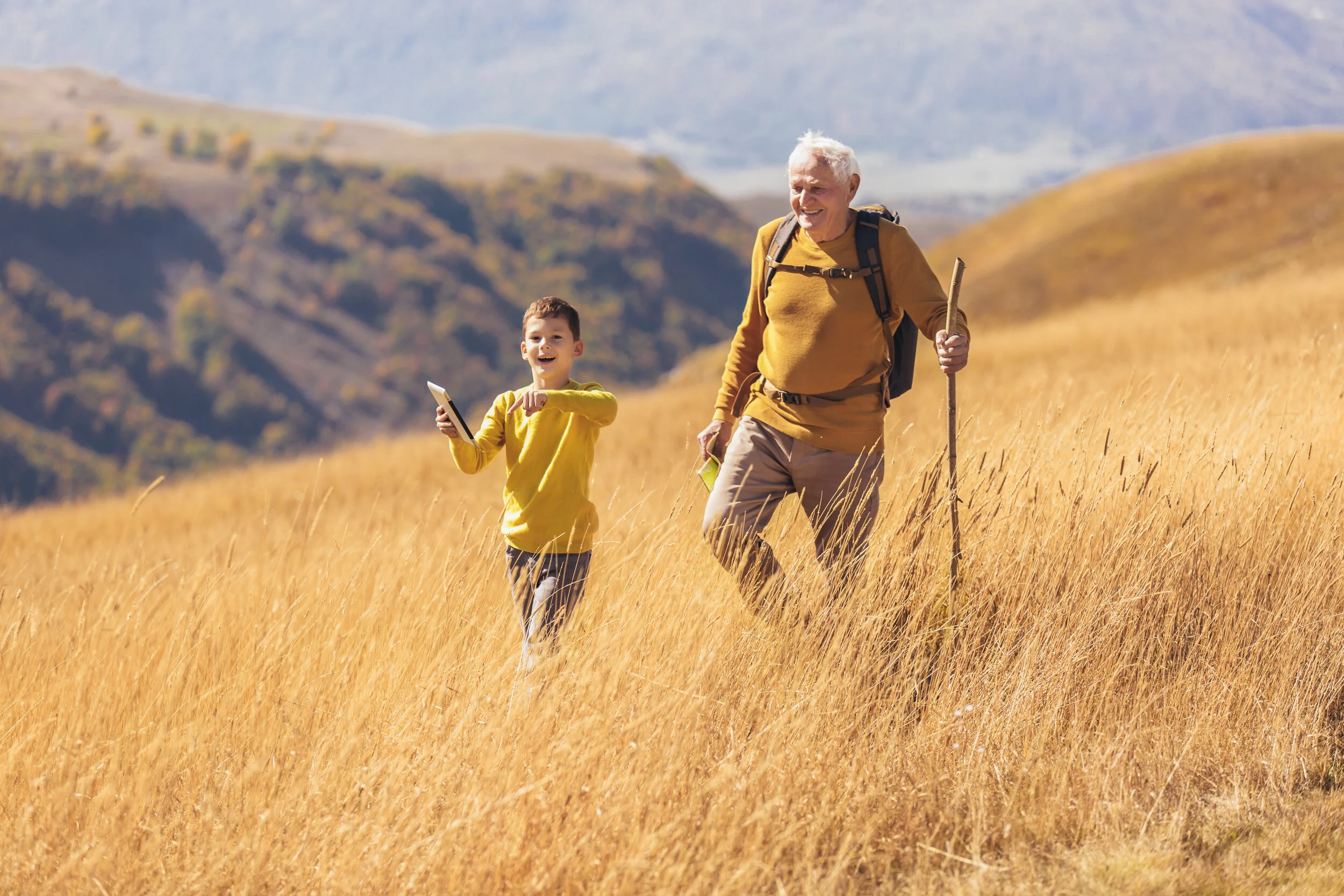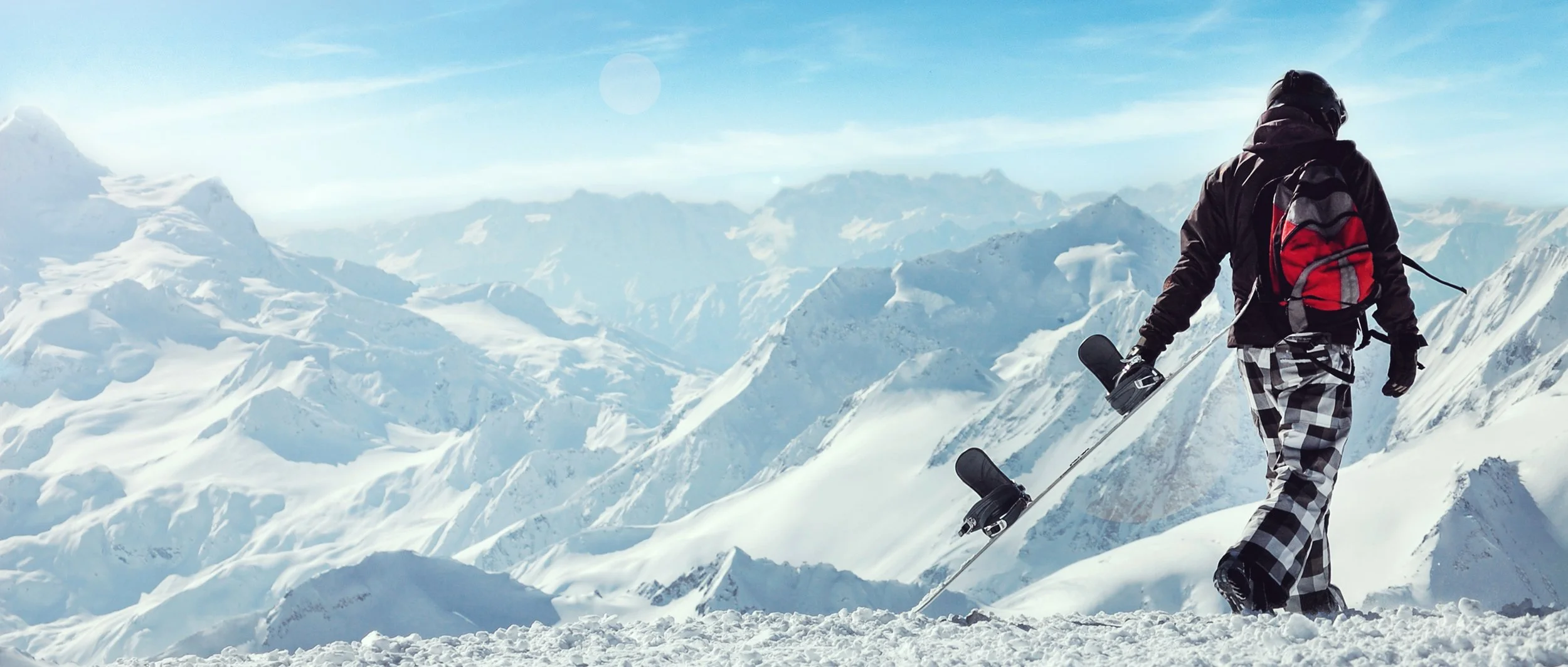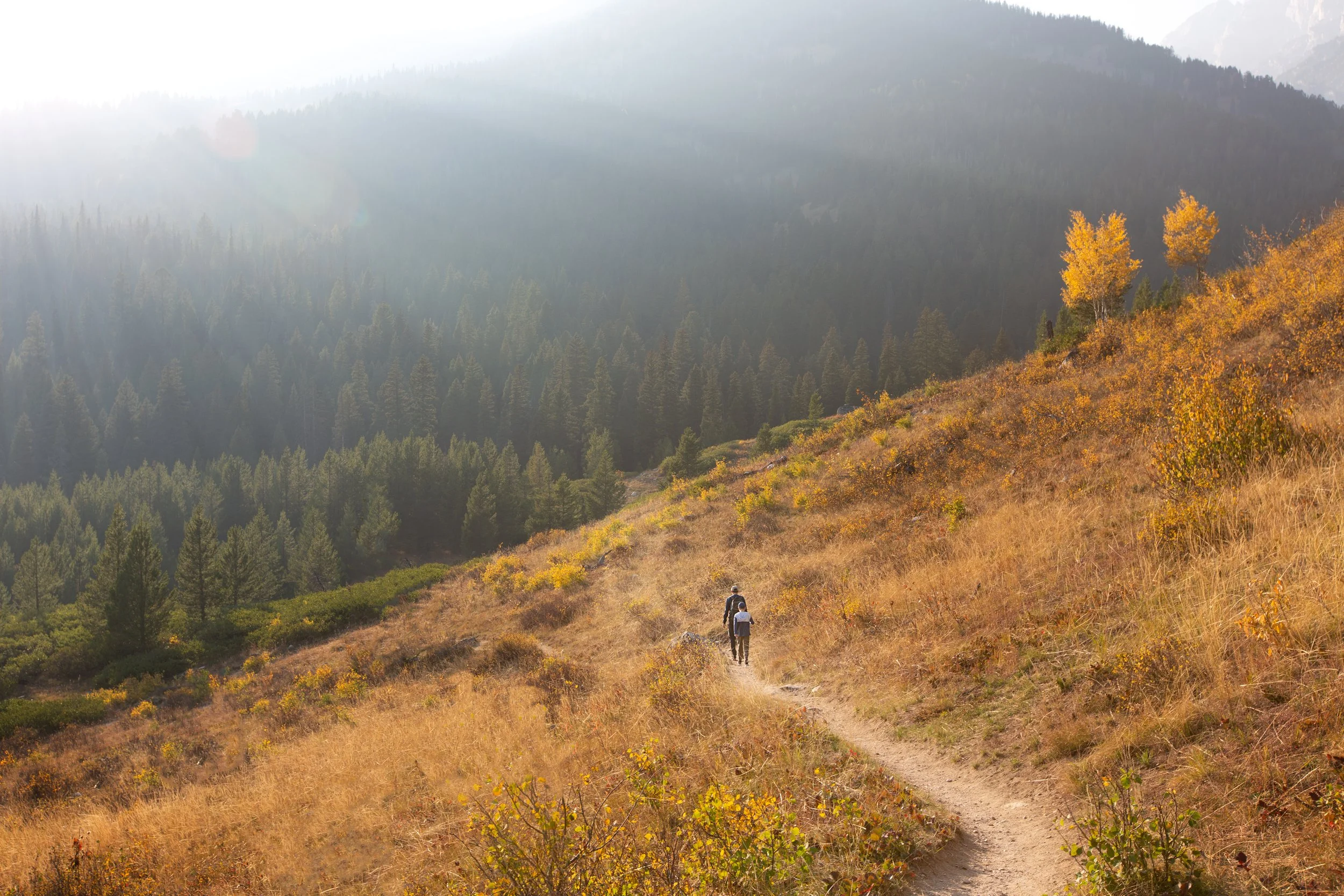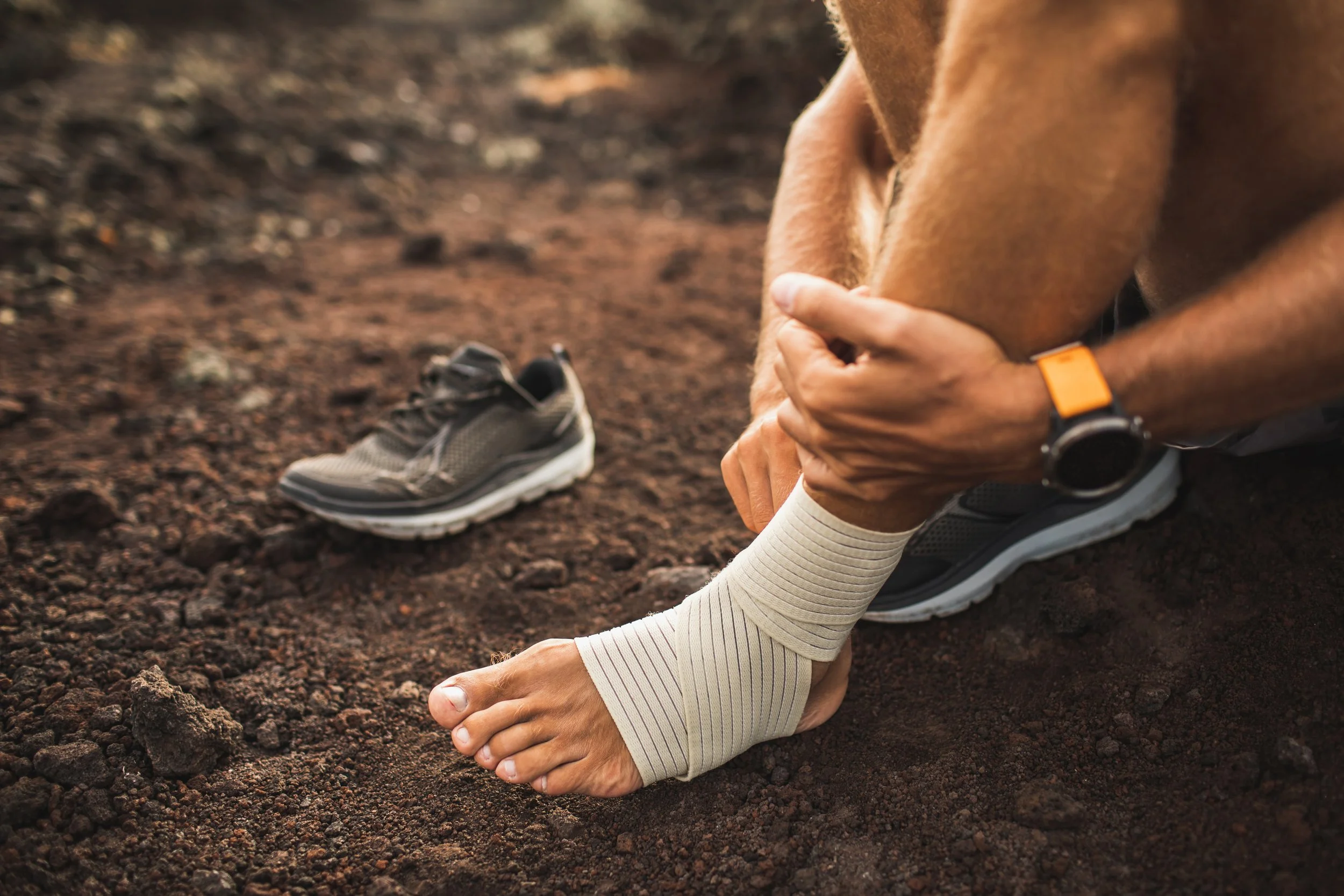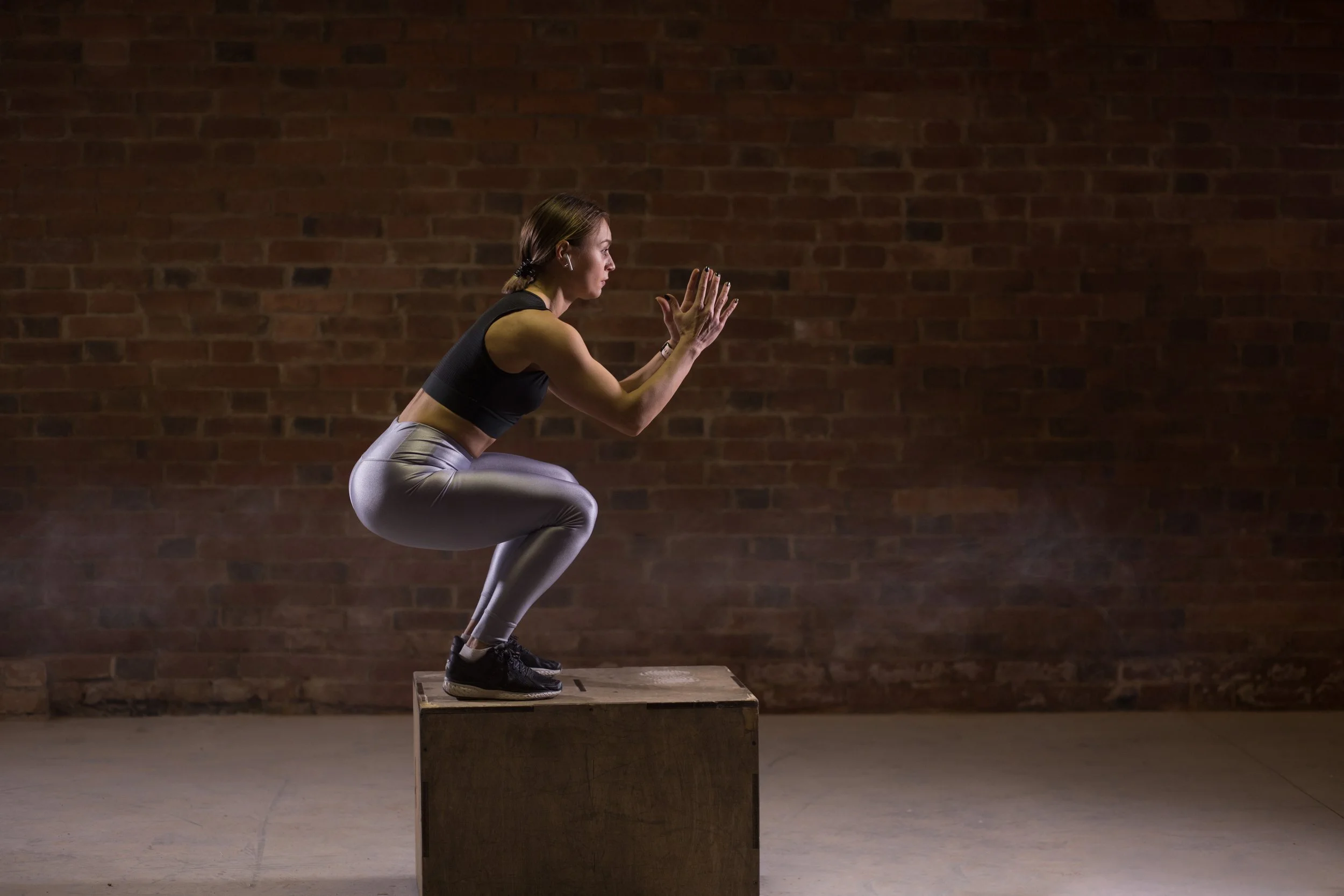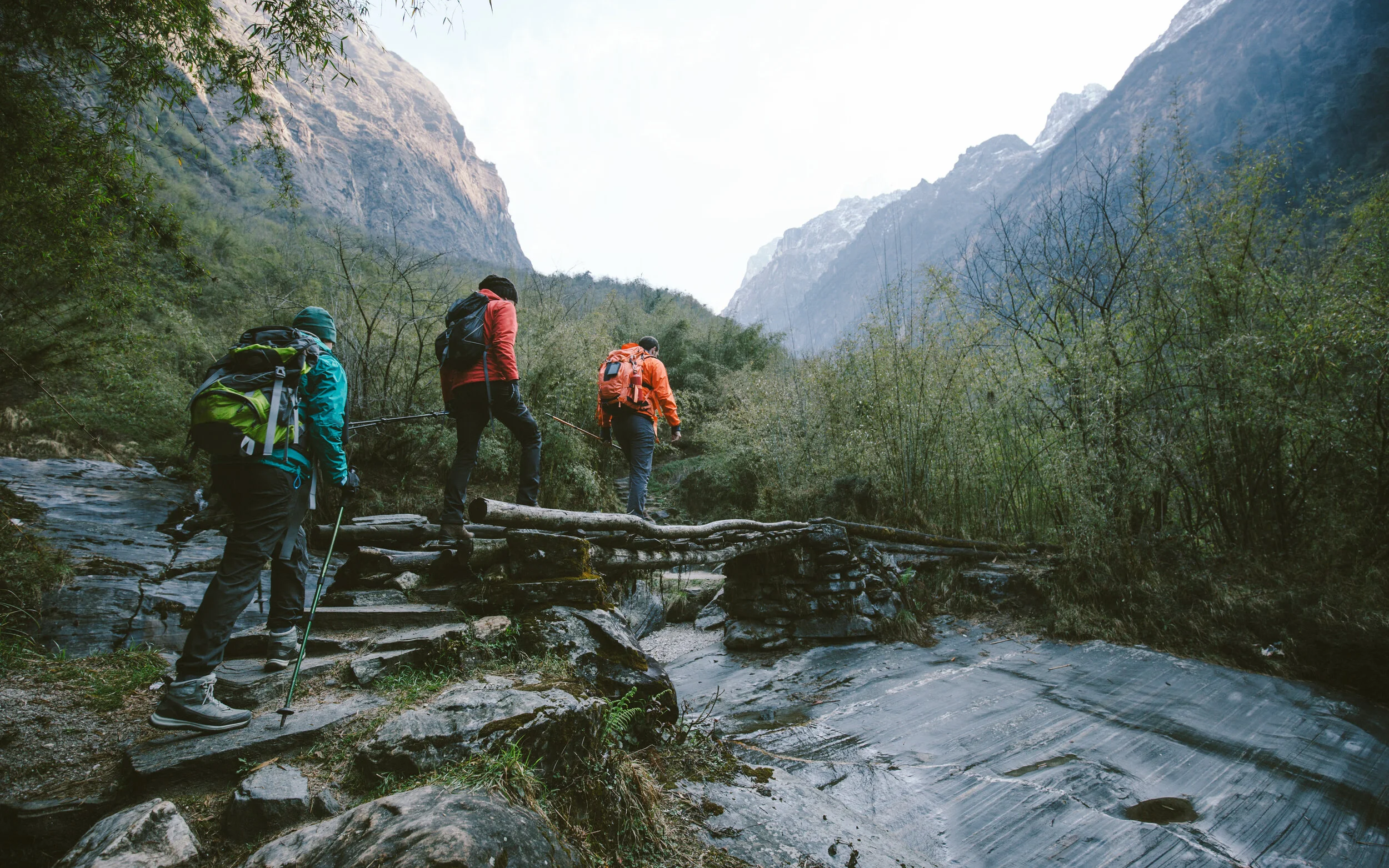What is a bone stress injury (BSI) and how do I know I have one? How long will it take to get me back to running? As a physical therapist who treats a lot of runners and as a lifelong runner myself, I have always had a passion for keeping runners running. The act of running can make someone’s day tick along better, can help with consistent sleep, calm the nerves and can even make a runner more fun to be around. It can be social or an act of solitude. It can be alarming for a runner when they start to experience a nagging pain that doesn’t warm up or even worsens as they run. Pain that doesn’t dissipate with a warm-up routine or is vague at first but then becomes localized or intensifies through the run can be a sign of a bone stress injury or BSI. BSI is a general term indicating mechanical load is exceeding the bone’s structural ability to withstand the load. However, BSIs occur on a continuum. One end of that continuum is a stress reaction, the other end can be stress fracture or even a full fracture of the bone. The runner recognizes this as pain that isn’t normally present. BSIs can occur for many reasons whether due to biomechanics or from a nutritional standpoint or a combination of both. As high-school and college cross-country runners prepare now for this upcoming season, they should be aware of the common causes and ways to prevent bone stress injuries.
Raking Leaves
Mark Bouma, PT takes readers through the areas to watch out for while raking leaves. The fall changes in the PNW is a time of beautiful color but also typically wet and heavy leaves.
Patellofemoral pain is largely a diagnosis of exclusion. There can be many causes of knee pain and it is important for your healthcare provider to properly assess your individual condition. Many individuals have anterior knee pain with prolonged sitting with flexed knees.
There are three common provocative diagnostic tests that are most closely correlated with patellofemoral joint pain:
Squatting
Climbing Stairs
Eccentric Step-Down Test
Research has linked several key factors that may contribute to an individual developing patellofemoral pain. These factors are not present in everybody who has symptoms, but there are often impairments in one or more of these areas found during a physical therapy exam.
Turkey Bowl
Raking Leaves
Mark Bouma, PT takes readers through the areas to watch out for while raking leaves. The fall changes in the PNW is a time of beautiful color but also typically wet and heavy leaves.
Patellofemoral pain is largely a diagnosis of exclusion. There can be many causes of knee pain and it is important for your healthcare provider to properly assess your individual condition. Many individuals have anterior knee pain with prolonged sitting with flexed knees.
There are three common provocative diagnostic tests that are most closely correlated with patellofemoral joint pain:
Squatting
Climbing Stairs
Eccentric Step-Down Test
Research has linked several key factors that may contribute to an individual developing patellofemoral pain. These factors are not present in everybody who has symptoms, but there are often impairments in one or more of these areas found during a physical therapy exam.
Turkey Bowl 2023
Bone Stress Injuries
What is a bone stress injury (BSI) and how do I know I have one? How long will it take to get me back to running? As a physical therapist who treats a lot of runners and as a lifelong runner myself, I have always had a passion for keeping runners running. The act of running can make someone’s day tick along better, can help with consistent sleep, calm the nerves and can even make a runner more fun to be around. It can be social or an act of solitude. It can be alarming for a runner when they start to experience a nagging pain that doesn’t warm up or even worsens as they run. Pain that doesn’t dissipate with a warm-up routine or is vague at first but then becomes localized or intensifies through the run can be a sign of a bone stress injury or BSI. BSI is a general term indicating mechanical load is exceeding the bone’s structural ability to withstand the load. However, BSIs occur on a continuum. One end of that continuum is a stress reaction, the other end can be stress fracture or even a full fracture of the bone. The runner recognizes this as pain that isn’t normally present. BSIs can occur for many reasons whether due to biomechanics or from a nutritional standpoint or a combination of both. As high-school and college cross-country runners prepare now for this upcoming season, they should be aware of the common causes and ways to prevent bone stress injuries.
Couch to 5K
Like many of us do in the New Year, I made it a goal to become more healthy and active in 2023. One of my goals was to Become A Runner– a tall order for me. To be completely honest, running and I haven’t had the best relationship. For me, running had to involve chasing a ball to be interesting… football, basketball, volleyball, softball, even spikeball. Running for the sake of running itself has never been at the top of my list. I’ve come up with a lot of excuses to avoid it: running is boring, it’s no fun to run on a track/treadmill, and most frequently, “running hurts my…(insert painful body part of the week)”. At the time, I automatically assumed that jogging would exacerbate my pain, rather than help it. However, as a physical therapist I have plenty of opportunities to treat runners, and have helped each return to their sport one by one. With my resolutions this year, my thoughts began to shift: if I could help others manage their injuries and return to running, then why couldn’t I do the same for myself? I decided to take on the challenge of performing my own case study, with myself as the patient: Can this couch potato successfully build his way to running a 5k?
The Journey of a Lifetime
If you are looking for a story filled to the brim with inspiration, look no further. What would it take to motivate you to ride your bike across the United States? For 67-year-old Ray Wittmier, and longtime friend, 68-year-old Gene Woodard, it was a girl named Maya. Ray and Gene are “honorary uncles” to Maya, a 13-year-old who was diagnosed with a Wilms tumor on her kidney at the age of 7.
I first met Ray in early August 2021 about a week after he received a total knee replacement. From the moment I began working with Ray, it became clear that he was fully committed to his rehabilitation. He possessed the mindset and determination for a successful outcome. I could tell by the way he approached his rehab that he had lofty movement goals and I was excited to help him on his journey.
Knee Osteoarthritis
Knee pain can slow down the best of us but with physical therapy much of the limitations can be improved. Climbing stairs, biking, running, gardening, playing with kids, hiking, and long walks can all be improved with range of motion, balance, and strength. Ask a physical therapist today for more information.
Winter is Coming
Winter is coming! With another La Nina year in the forecast, the PNW is in for another cold and wet season. For all of you powder dogs out there, this means one thing– SNOW. I’ve been waiting since August for snowboarding season to come along, and the time has finally come. It's time to shred the gnar! I picked up snowboarding a few seasons ago and it has become my latest obsession (possibly even more than spikeball). One of the reasons I’ve learned to love it so much is because it allows me to get outside during the winter. The Seattle area is notorious for its gray, gloomy, and dark winter days, and that plays a huge role with my mood at this time of year. My perspective has changed completely since learning how to get out on the slopes each season. Now I actually get excited for those drizzly days, because that means more freshies up at elevation and all the more epic of runs on the upcoming weekend.
Just starting out on your snowboarding journey? For all you first timers out there, know that you will be spending a lot of time on your butt during the first few times you’re on the mountain. Generally speaking, snowboarding is usually harder to learn, but easier to master; alternatively, skiing is easier to learn but harder to master. However, don’t let this discourage you– the growing pains are worth it once you start completing those S-turns. To start off, you can figure out if you prefer a “goofy” or “regular” stance before even setting foot on the snow. This video by LWPT’s own Katie Hutchins Do You Ride Regular or Goofy? || REI will help you determine which foot will be your lead foot. Understanding which stance you are more comfortable with will play a huge role in your ability to balance and turn. Knowing the basics before going to the mountain will help make a day on your tushy a little easier. You can also watch this video How to Snowboard - the basics of riding for your first day | REI to learn how to navigate the mountain on your first day.
Precautions for Hiking
Turkey Bowl
Raking Leaves
Mark Bouma, PT takes readers through the areas to watch out for while raking leaves. The fall changes in the PNW is a time of beautiful color but also typically wet and heavy leaves.
Patellofemoral pain is largely a diagnosis of exclusion. There can be many causes of knee pain and it is important for your healthcare provider to properly assess your individual condition. Many individuals have anterior knee pain with prolonged sitting with flexed knees.
There are three common provocative diagnostic tests that are most closely correlated with patellofemoral joint pain:
Squatting
Climbing Stairs
Eccentric Step-Down Test
Research has linked several key factors that may contribute to an individual developing patellofemoral pain. These factors are not present in everybody who has symptoms, but there are often impairments in one or more of these areas found during a physical therapy exam.
March for Larch
Hiking is high on the list of PNW pastimes. It’s a great excuse to explore the mountains and enjoy every bit of the natural beauty that Washington State has to offer. Peak hiking season in Washington tends to run from late Spring through summer, as the snow melts and the temperatures get warmer. However my personal favorite is a short window of a few weeks in early Autumn– larch season. Larches are a variety of trees that may at first glance resemble a typical pine, but larches do not stay green year-round. Unlike their evergreen neighbors, larch tree needles turn a beautiful golden yellow color in the early fall. For two to three weeks at the end of September until the first snows in October, the Pacific Northwest is blessed with beautiful variation in the forests as those golden yellow pine trees reach peak color. It’s a short window before the trees begin to lose their pine needles as temperatures drop, so you don’t want to miss out on the annual larch madness.
Precautions for Hiking
Ankle Sprains
It’s a beautiful fall morning and you are walking your dog along a path near your house. The birds are singing and the trees are bright green with new buds of growth. As you place your right foot down on the trail, your ankle gives way and it feels like you stepped into a hole. You lurch to your right off the trail and narrowly recover your balance to prevent a fall. You immediately notice a familiar sharp pain along the outside of your ankle. As you examine the trail behind you, you notice a very small pebble on the flat trail where your ankle gave way. Why do these tiny pebbles continue to cause your ankle to roll every 3-6 months?
Up to 70% of people who sustain an acute ankle sprain may develop chronic ankle instability with the likelihood of additional ankle sprains. When you sprain your ankle, the connective tissues (ligaments) are stretched or torn. Each subsequent sprain leads to further weakening (or stretching) of the ligaments, resulting in greater instability and the likelihood of developing additional problems in the ankle.
ACL Series Part 3: Rehab
Right now, I am 1.5 years post ACL surgery, but 3.5 years post ACL injury. I will be recalling my experience starting at the time of injury all the way through my individual Physical Therapy experience. This will be a multi-part series that tells my story, plus various research facts and personal details along the way.
ACL Series Part 2: Surgery
Right now, I am 1.5 years post ACL surgery, but 3.5 years post ACL injury. I will be recalling my experience starting at the time of injury all the way through my individual Physical Therapy experience. This will be a multi-part series that tells my story, plus various research facts and personal details along the way.
ACL Series Part 1: Pre-Surgery
Right now, I am 1.5 years post ACL surgery, but 3.5 years post ACL injury. I will be recalling my experience starting at the time of injury all the way through my individual Physical Therapy experience. This will be a multi-part series that tells my story, plus various research facts and personal details along the way.
Raking Leaves
The annual prevalence of patellofemoral pain in the general population has been found to be over 22%! Anterior knee pain is not just a problem for young adults and adolescents. In this article, I’d like to provide you with several key tests you can use to help determine if you may have patellofemoral pain and then outline how a physical therapist can successfully help you recover.
Patellofemoral pain is largely a diagnosis of exclusion. There can be many causes of knee pain and it is important for your healthcare provider to properly assess your individual condition. Many individuals have anterior knee pain with prolonged sitting with flexed knees.
There are three common provocative diagnostic tests that are most closely correlated with patellofemoral joint pain:
Squatting
Climbing Stairs
Eccentric Step-Down Test
Research has linked several key factors that may contribute to an individual developing patellofemoral pain. These factors are not present in everybody who has symptoms, but there are often impairments in one or more of these areas found during a physical therapy exam.
Patellofemoral Joint
The annual prevalence of patellofemoral pain in the general population has been found to be over 22%! Anterior knee pain is not just a problem for young adults and adolescents. In this article, I’d like to provide you with several key tests you can use to help determine if you may have patellofemoral pain and then outline how a physical therapist can successfully help you recover.
Patellofemoral pain is largely a diagnosis of exclusion. There can be many causes of knee pain and it is important for your healthcare provider to properly assess your individual condition. Many individuals have anterior knee pain with prolonged sitting with flexed knees.
There are three common provocative diagnostic tests that are most closely correlated with patellofemoral joint pain:
Squatting
Climbing Stairs
Eccentric Step-Down Test
Research has linked several key factors that may contribute to an individual developing patellofemoral pain. These factors are not present in everybody who has symptoms, but there are often impairments in one or more of these areas found during a physical therapy exam.
Anterior Knee Pain
Knee pain can slow down the best of us but with physical therapy much of the limitations can be improved. Climbing stairs, biking, running, gardening, playing with kids, hiking, and long walks can all be improved with range of motion, balance, and strength. Ask a physical therapist today for more information.

